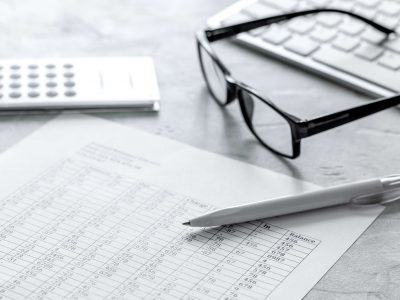
In addition, a company could have a great liquidity ratio but be unprofitable and lose money each year. Other investment assets that take longer to convert to cash might include preferred or restricted shares, which usually have covenants dictating how and when they can be sold. In addition, specific types of investments may not have robust markets or a large group of interested investors to acquire the investment. Consider private shares of stock that cannot easily be exchanged by logging into your online brokerage account. Liquid assets, however, can be easily and quickly sold for their full value and with little cost.
Video Explanation of the Balance Sheet
How quickly a current asset account can convert into cash can change depending on the company and the industry. However, there are accounts that have pretty standard turnaround times for cash conversion. Within the balance sheet, we can find information on the assets, liabilities and shareholders’ equity of a company. Generally, liquid assets are traded on well-established markets with a large number of buyers and sellers. The high number of market participants, along with large trading volumes, ensure the fast disposal of the assets without significantly losing value. Items on a company’s balance sheet are typically listed from the most to the least liquid.

Do you own a business?
For instance, many financial advisors recommend that you have at least three to six months of expenses in liquid assets in an emergency fund, should you lose your job or experience financial hardship. Liquidity is important because owning liquid assets allows you to pay for basic living expenses and handle emergencies when they arise. But it’s important to recognize that liquidity and holding liquid assets comes at a cost. For instance, a capital-intensive industry like construction may have a much different operational structure than that of a service industry like consulting. Comparing the liquidity ratios of different companies may not always be comparable, fair, or truly informative. For example, internal analysis regarding liquidity ratios involves using multiple accounting periods that are reported using the same accounting methods.
Why do investors care about current liabilities?
- The operating cash flow ratio is a measure of short-term liquidity by calculating the number of times a company can pay down its current debts with cash generated in the same period.
- This account is derived from the debt schedule, which outlines all of the company’s outstanding debt, the interest expense, and the principal repayment for every period.
- In terms of investments, equities as a class are among the most liquid assets.
- Businesses need enough liquidity on hand to cover their bills and obligations so that they can pay vendors, keep up with payroll, and keep their operations going day in and day out.
- This route may not be available for a company that is technically insolvent because a liquidity crisis would exacerbate its financial situation and force it into bankruptcy.
Instead, they will have to sell the collection and use the cash to purchase the refrigerator. Thomas J Catalano is a CFP and Registered Investment Adviser with the state of South Carolina, where he launched his own financial advisory firm in 2018. Thomas’ experience gives him expertise in a variety of areas including investments, retirement, insurance, and financial planning. Adam Hayes, Ph.D., CFA, is a financial writer with 15+ years Wall Street experience as a derivatives trader. Besides his extensive derivative trading expertise, Adam is an expert in economics and behavioral finance.
Enter your name and email in the form below and download the free template now! You can use the Excel file to enter the numbers for any company and gain a deeper understanding of how balance sheets work. In order to understand the order of liquidity, being familiar with the meaning of liquidity is key. When talking about liquidity of a company, it makes reference to the capacity of a company to settle their liabilities. Because they are the most liquid, meaning, you can convert them to cash quickly and easily.
Marshalling of Balance Sheet

Liquidity refers to how easily or efficiently cash can be obtained to pay bills and other short-term obligations. Assets that can be readily sold, like stocks and bonds, are also considered to be liquid (although cash is, of course, the most liquid asset of all). For some investors and liabilities in order of liquidity for some circumstances, illiquid assets actually hold an advantage over liquid assets. If a company or individual can sacrifice liquidity, it may generate higher returns from the asset. Assets like stocks and bonds are very liquid since they can be converted to cash within days.
Types of Liquidity Ratios
Cash is universally considered the most liquid asset because it can most quickly and easily be converted into other assets. Tangible assets, such as real estate, fine art, and collectibles, are all relatively illiquid. Other financial assets, ranging from equities to partnership units, fall at various places on the liquidity spectrum. As you can see in the list above, cash is, by default, the most liquid asset since it doesn’t need to be sold or converted (it’s already cash!). Stocks and bonds can typically be converted to cash in about 1-2 days, depending on the size of the investment. Finally, slower-to-sell investments such as real estate, art, and private businesses may take much longer to convert to cash (often months or even years).
Liquidity and Your Financial Accounts
- For example, even the balance sheet has such alternative names as a “statement of financial position” and “statement of condition.” Balance sheet accounts suffer from this same phenomenon.
- The quick ratio, sometimes called the acid-test ratio, is identical to the current ratio, except the ratio excludes inventory.
- A number higher than one is ideal for both the current and quick ratios, since it demonstrates that there are more current assets to pay current short-term debts.
- Miranda Marquit has been covering personal finance, investing and business topics for almost 15 years.

